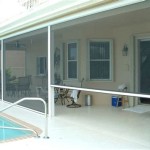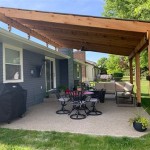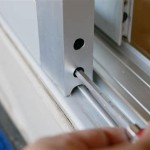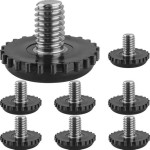Easy To Install Patio Pavers
Patio pavers offer a versatile and aesthetically pleasing solution for enhancing outdoor living spaces. Their modular nature allows for a variety of designs and patterns, while their durability ensures long-lasting performance. Choosing easy-to-install pavers further simplifies the process, making it a viable DIY project for many homeowners. This article will explore various aspects of easy-to-install patio pavers, from material selection and preparation to the installation process itself.
Choosing the Right Pavers
The first step in any paving project involves selecting the appropriate paver material. Several factors influence this decision, including budget, desired aesthetic, and the intended use of the patio. Concrete pavers are a popular choice due to their affordability and wide range of colors and styles. Brick pavers offer a classic, timeless look and are renowned for their durability. Natural stone pavers, such as flagstone or slate, provide a more upscale appearance but come at a premium price. For DIY installations, interlocking concrete pavers are often preferred due to their ease of use. These pavers often require minimal cutting and can be fitted together without mortar, simplifying the installation process significantly.
Preparing the Site
Proper site preparation is crucial for the long-term success of any paving project. The area designated for the patio must be accurately measured and marked. Existing vegetation should be removed, and the soil needs to be excavated to the appropriate depth. This depth will depend on the thickness of the pavers and the intended use of the patio. A compacted base of gravel and sand is essential for providing a stable and level foundation. The gravel layer aids in drainage, while the sand layer provides a bedding surface for the pavers. Proper compaction of these layers prevents settling and ensures the longevity of the patio.
Installing the Pavers
With the site adequately prepared, the paver installation can begin. It's advisable to start laying the pavers from a straight edge, such as a house foundation or a pre-existing walkway. This establishes a reference point for maintaining alignment and ensures a professional-looking finished product. Interlocking pavers are typically placed side-by-side and gently tapped into the sand bed with a rubber mallet. Maintaining consistent spacing between pavers is crucial. Spacers can be used to achieve uniformity and create even joints. As the pavers are laid, periodic checks for levelness are essential. A long, straight board and a level can be used to ensure the surface remains even.
Adding the Finishing Touches
Once all the pavers are in place, the final step involves filling the joints between them. Polymeric sand is a popular choice for this purpose, as it hardens when wet, inhibiting weed growth and providing a stable surface. The polymeric sand is swept into the joints and then lightly watered to activate the hardening process. Edge restraints are often installed around the perimeter of the patio to prevent the pavers from shifting over time. These restraints can be made of plastic, metal, or concrete and are typically secured with spikes driven into the ground.
Maintaining Your Patio
Maintaining a paver patio is relatively straightforward. Regular sweeping helps remove debris and prevents the buildup of dirt. Occasional cleaning with a mild detergent and water can remove stains and keep the pavers looking their best. For more stubborn stains, specialized paver cleaners are available. Inspecting the patio periodically for any loose or damaged pavers is also recommended. These can be easily replaced, preventing further issues and preserving the integrity of the patio surface.
Choosing the Right Pattern
The pattern in which the pavers are laid significantly impacts the overall aesthetic of the patio. Several patterns are available, each offering a unique look. Running bond and herringbone are popular choices for their simplicity and classic appeal. Basket weave and circular patterns add visual interest and can create a focal point within the patio area. The chosen pattern should complement the surrounding landscape and the architectural style of the house.
Addressing Drainage Concerns
Proper drainage is essential for preventing water accumulation on the patio surface. During site preparation, incorporating a slight slope away from the house or other structures ensures effective water runoff. The gravel base beneath the sand layer also aids in drainage, allowing water to percolate through the soil. In areas with poor drainage, the installation of a French drain or other drainage system may be necessary to prevent water-related issues.

How To Install A Diy Paver Patio The Easy Way Angela Marie Made

How To Build A Paver Patio Young House Love

Diy Paver Patio And Firepit Life On Shady Lane

How To Install A Diy Paver Patio The Easy Way Angela Marie Made

Easiest Patio Pavers You Ll Ever Install Youtube

Easiest Patio Pavers You Ll Ever Install

How To Build A Paver Patio Rogue Engineer

Diy Pea Gravel Patio With Pavers Love Renovations

How To Install A Diy Paver Patio The Easy Way Angela Marie Made

Take The Fun Outside With A Paver Patio Seattle Times








